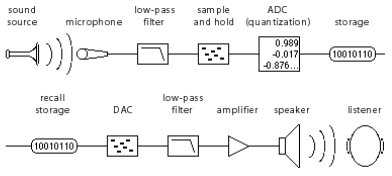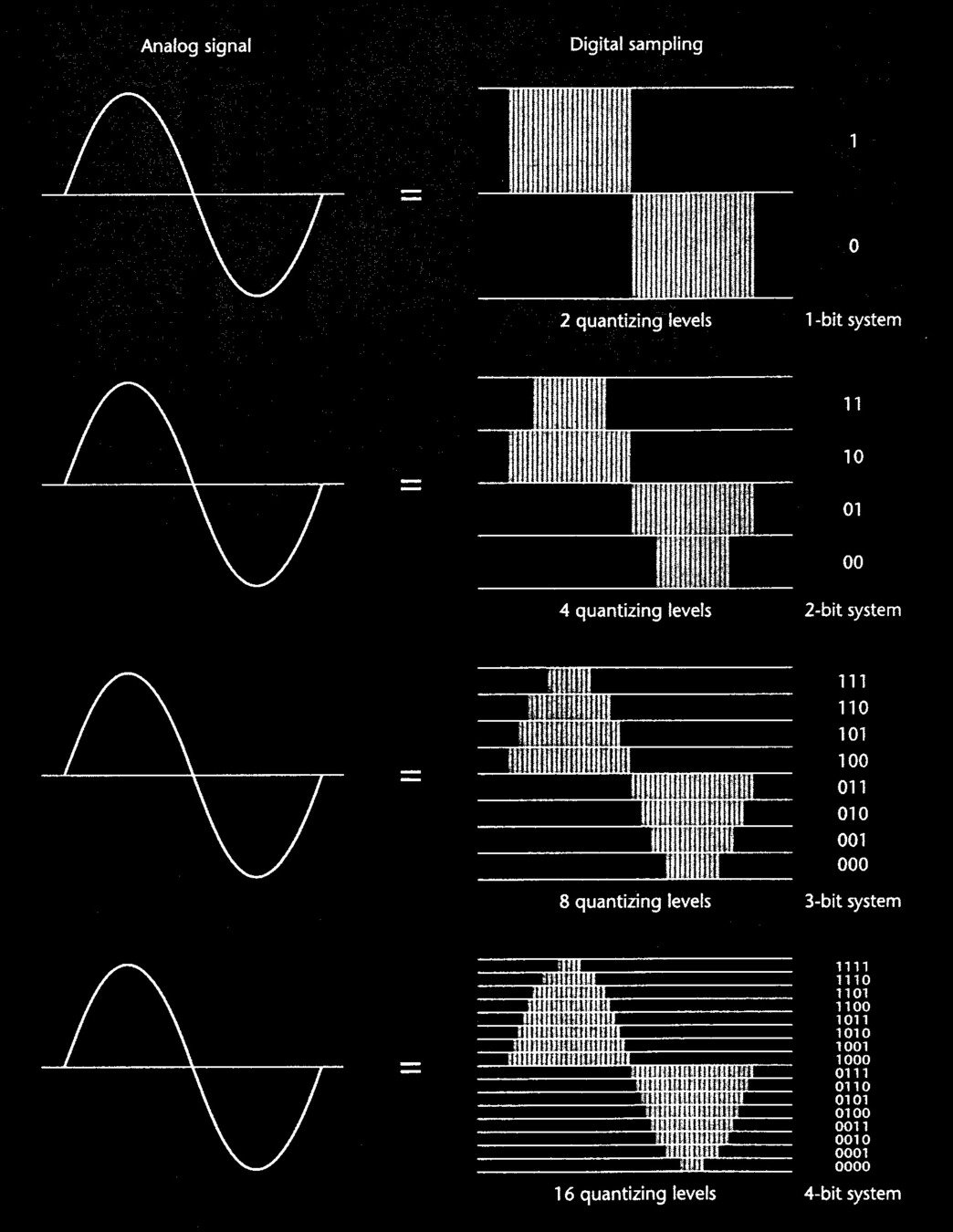ANALOG-TO-DIGITAL CONVERSION
Review of the Nature of Digital Data
- A digital bit has a concrete value that can be accurately stored reproduced.
- Only 2 values means long binary numbers, but easier handling and less error-prone. This is fine for computers, because they are stoopid, but fast.
- Terms in digital audio also have similar meanings in digital images and video.
Analog-to-Digital Conversion
- The process of taking a continuous analog signal and encoding it into discrete values.
- Sometimes called ADC or A/D
- Reverse process is digital-to-analog conversion (DAC or D/A)
- Most common method uses PCM (pulse code modulation), but there are other ways to do it.
- Foundation in Harry Nyquist's theorem (Bell Labs, 1928!)
- Claude Shannon proved algebra could be done with electronics, making computing and information theory a reality (Bell Labs, 1949)
The Zoetrope
Digital Sound Quality
Meaningful Measurements?
"CD Quality"
"Studio Grade"
"Audiophile Quality"
"Professional Grade"
Since we care about how it sounds, better go back to the Acoustic World...
What are the most basic components of a sound, again?
Frequency Response
Sampling Rate = How Frequently to Measure?
- Nyquist Theorem: Sample twice as often as the highest frequency:
- To capture 4 kHz, sample 8 kHz (8000 times per second).
- 8 kHz = 16 kHz sample rate
- 20 kHz = 40 kHz sample rate
The Problem: Aliasing

Audio Aliasing
The Solution: LPF

Common Sampling Rates
- 44.1 kHz = CD
- 48 kHz = Video
- 88.2, 96, 192, 384 kHZ!
- Sample rate conversion is not a trivial process, and should be avoided unless necessary.
Amplitude
Bit Resolution = How Precisely to Measure?
- Measuring amplitude means measuring dynamic range.
- Bits combine to form 'words' (16-bit word, 24-bit word, etc.)
- 1 Bit = 6 dB of dynamic range (meaning it lowers the noise floor by 6 dB)
- More bits = more possible amplitude values = less quantization error
| WORD LENGTH | DYNAMIC RANGE | AMPLITUDE VALUES |
|---|---|---|
| 2 Bits | 12 dB (6dB/bit x 2 bits) |
4 |
| 8 Bits | 48 dB | 256 |
| 16 Bits–CD | 96 dB | 65,536 |
| 24 Bits | 144 dB | 16,777,216 |
(\( 2 ^2 \))
(\( 2 ^8 \))
(\( 2 ^{16} \))
(\( 2 ^{24} \))



1 Bit (2 values)
2 Bit (4 values)
8 Bit (256 values)

Quantization Error

Quantization Error

It is difficult to appreciate the accuracy achieved by a 16-bit measurement. An analogy might help: If sheets of typing paper were stacked to a height of 22 feet, a single sheet of paper would represent one quantization level in a 16-bit system.
Looked at in another way, if the distance between New York and Los Angeles were measured with 24-bit accuracy, the measurement would be accurate to within 9 inches. A high-quality digital audio system thus requires components with similar tolerances– not a trivial feat.
–from Fundamentals of Digital Audio by John Watkinson
